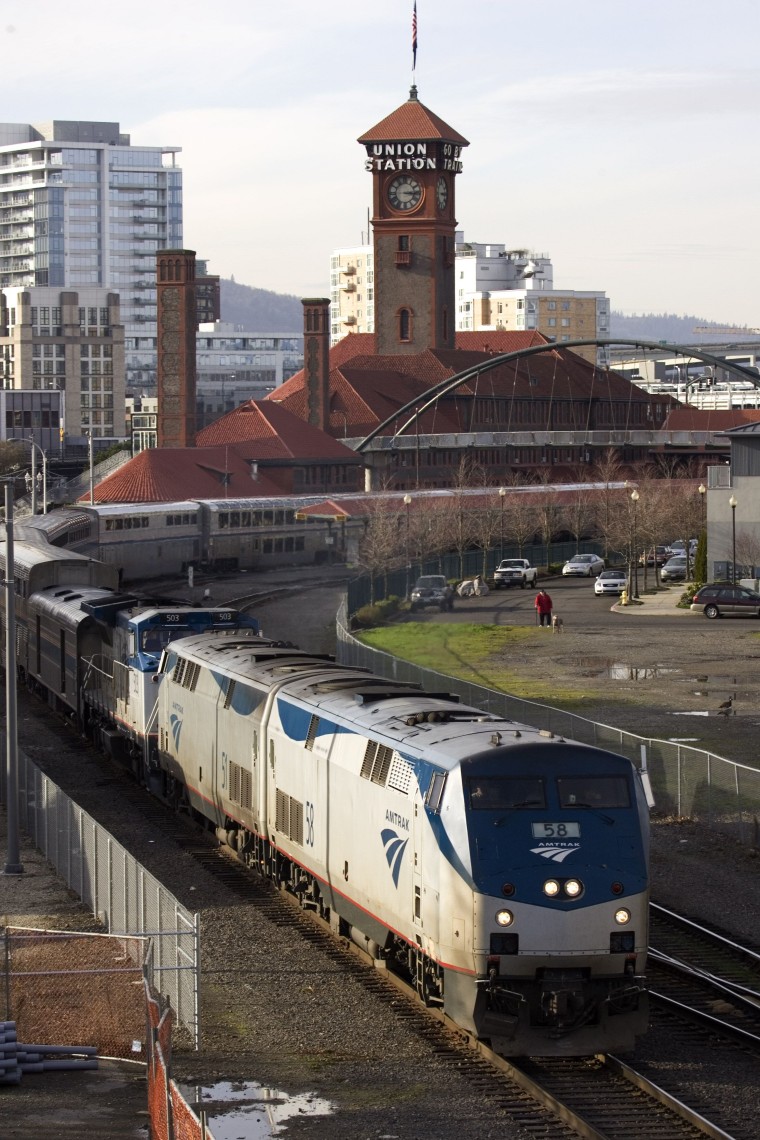As the owner of The Examiner Corp., a software-development company in St. Paul, Minn., Gary Brown travels five or six times a year to see clients in Chicago and Morgantown, W.Va. Not surprisingly, perhaps, he typically leaves town via MSP.
What is surprising, though, is that he rarely goes anywhere near Minneapolis-St. Paul International Airport. Instead, he heads to Midway Station (which sports the same MSP code), catches an Amtrak train and settles in for his trip.
“There are a zillion flights a day from the Twin Cities,” says Brown, “but I’ve pretty much switched to train travel for all my business trips east of St. Paul.”
Honoring history, investing in the future
He’s in good company these days as the hassles of air travel mount and Amtrak proves to be an increasingly viable alternative. During the first six months of fiscal year 2010, Amtrak trains carried 13.6 million passengers, up 4.3 percent from the same period a year earlier. If the pace holds, the rail operator is on track to beat the record of 28.7 million passengers it set in 2008.
Such news will no doubt provide a happy backdrop to Amtrak’s third annual National Train Day on May 8. The festivities, which commemorate the 141st anniversary of the completion of the nation’s first transcontinental railroad, will include large-scale, family-friendly events in Chicago, Los Angeles, Philadelphia and Washington, D.C. Another 150 communities around the country will host smaller events (a full list can be found here).
While the May 8 festivities are geared toward kids, families and dedicated rail fans, Amtrak is also in the midst of a major effort to improve its services and amenities on a longer-term basis. “We are investing in our infrastructure to improve the reliability, safety and security of our operations and support the growing demand to travel by Amtrak,” said President and CEO Joseph Boardman in a statement last week.
Among the recent and pending improvements:
- Between 2006 and 2009, the on-time performance of Amtrak’s 15 long-distance trains improved from 30 to 75 percent. Upgraded sleeping cars, schedule changes and other improvements helped boost customer satisfaction scores from 65 to 80 percent.
- In March, Amtrak began offering free Wi-Fi on all high-speed Acela Express trains. Currently available onboard and in seven stations along the trains’ Boston–Washington, D.C. route, the service will be evaluated to determine possible fees and rollouts to other routes.
- Last week, Boardman unveiled details about Amtrak’s $1-billion construction program for this summer. Projects include rehabilitating out-of-service cars and locomotives in Indiana, restoring tracks in Illinois and Louisiana and replacing the 1907 Niantic River Bridge in Connecticut.
New programs, more packages and no pesky baggage fees
Meanwhile, travelers considering long-distance train trips this summer can take advantage of new programs and package deals — amenities that provide a pleasant counterpoint to the service cutbacks and increasing indignities of air travel.
In March, Amtrak unveiled Amtraktoparks.com, a travel-planning Web site that touts the convenience of visiting national parks by train. It currently highlights eight routes, covers nearly 60 park units and provides detailed information on access, amenities and package deals.
Using the site’s trip wizard, users can choose from 16 packages ranging from one to 11 days. The Philadelphia National Parks package, for example, includes round-trip rail from Washington, D.C., two nights’ hotel and a hop-on/hop-off tour for $260. The Glacier National Park package offers round-trip rail from Seattle, two nights’ lodging and a park tour for $620.
{
"type": "Slideshow",
"element": null,
"html": null,
"ecommerceEnabled": false
}This summer also marks the 10th anniversary of the Trails & Rails program, the Amtrak-National Park Service partnership in which onboard volunteers provide interpretive insights about the world beyond the windows. Twelve trains currently offer 17 programs during the busy summer travel season.
This year, the program will feature a new twist. Before boarding the Sunset Limited (New Orleans-Los Angeles), MP3-toting passengers can visit AmtrakRailGuide.com and download short podcasts pegged to points of interest along the nearly 2,000-mile route. Download one or all 100 and you can learn about everything from Creole culture to the Sonoran Desert.
Put it all together and it’s not surprising that more travelers are turning to the train. Clearly, it doesn’t work in every situation and there will always be issues of time vs. cost, etc., but in an age of fewer flights, higher airfares and add-on fees gone wild, flying is probably going to get more unpleasant, not less.
In fact, when you add in the airlines’ most recent moves — Spirit charging for carry-on bags, Continental threatening more preemptive cancellations over the three-hour rule — I wouldn’t be surprised if even more travelers find themselves in the same situation as Gary Brown.
“I used to fly in the front of the bus all the time,” he says. “I used to be gold level on Northwest, but I haven’t been on a plane in eight or nine months.”
Rob Lovitt is a frequent contributor to msnbc.com. If you'd like to respond to one of his columns or suggest a story idea, .
